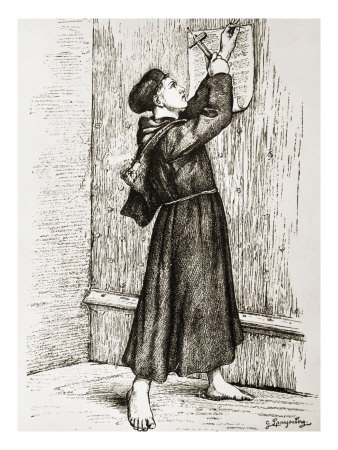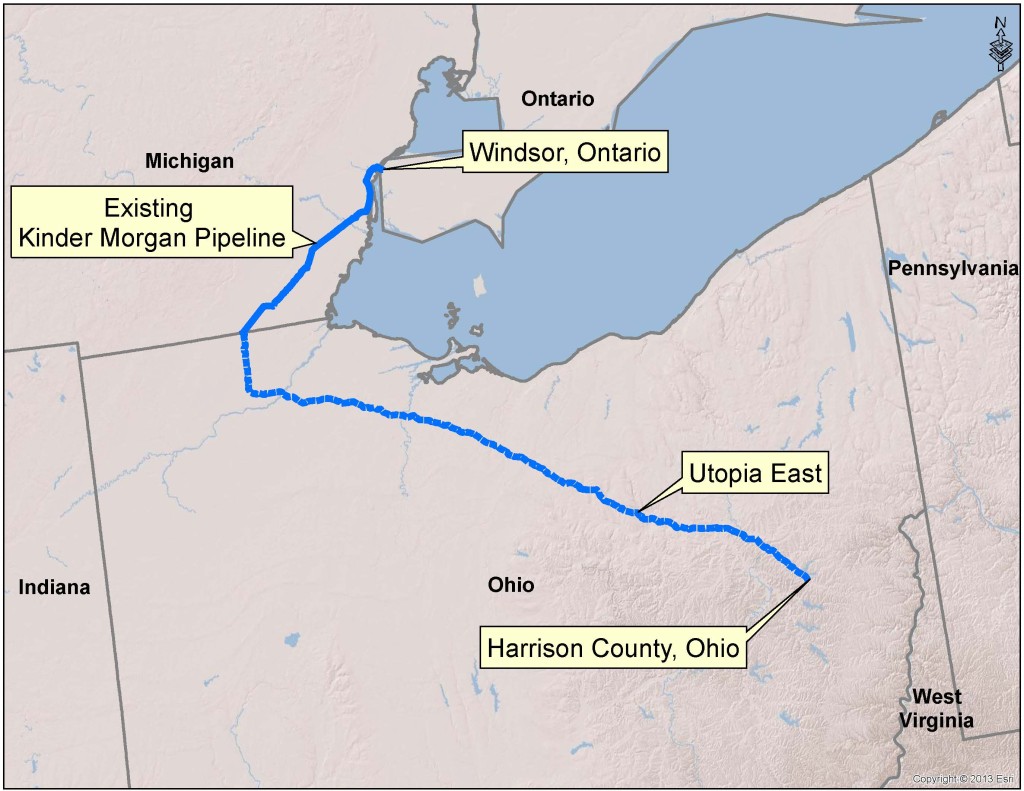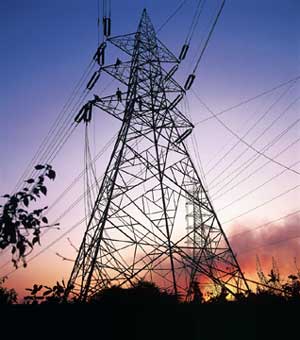In Ohio — Eminent domain only for public use
October 13th, 2016
Kinder Morgan, a private company, not a utility, sued to take land for its “Utopia” pipeline project. A judge in Wood County Ohio just said NO, they cannot take land, that eminent domain is only for public use, and Kinder Morgan’s pipeline is not a public use. This is a very hard hitting decision, and I sure hope they appeal it so we can get some precedent here.
The decision:
You’ve got to read this decision — very well done!
Notice? For utility infrastructure projects? DOH!
September 6th, 2015
 NOTICE!!! Landowners need notice if their land is affected! Local governments and residents need notice if their communities are affected! Yes, posting something can have an impact!
NOTICE!!! Landowners need notice if their land is affected! Local governments and residents need notice if their communities are affected! Yes, posting something can have an impact!
Notice is something that’s been an issue in utility dockets, and transmission proceedings particularly, for a long, long time. It’s something we’re trying to address in the Minn. R. Ch. 7850 in our rulemaking advisory committee meetings over the last TWO PLUS YEARS!
Here are the latest Comments:
Why does notice matter? Well, there’s this thing called “Due Process.” Notice is a fundamental Constitutional Right. It matters because “NOTICE” often doesn’t happen. And it ties in with eminent domain, where land may Constitutionally be taken for public purpose projects with just compensation (and what is a “public” project? What is “just” compensation?) If you aren’t properly informed, have no notice, what does that do to your ability to participate?
In Minnesota, it’s a matter of law, clear, simply stated law:
Looking over posts and filings where this has happened, situations I’ve been aware of where landowners have been surprised at the last minute, too late to meaningfully participate in the proceedings, have filed Motions for Reconsideration, and have been to the Appellate Court on their behalf, it is SO frustrating. Looking at the many times I’ve tried to intervene, to have intervention deadlines extended in case landowners want to stand up, There’s no excuse. People should not be surprised at the last minute with a utility attempt to run transmission over their land.
It happened recently in the Great Northern Transmission Line routing docket:
ALJ Order filed, no RRANT intervention
It happened in CapX Brookings route and on CapX Hampton- La Crosse route:
- Cannon Falls (CapX Hampton- LaX route) example to go around county park and DOT prohibited intersection area:
Cannon Falls Beacon – CapX in the news!
Dakota County resolution about CapX 2020
CAPX APPEAL — DECISION RELEASED (includes Cannon Falls)
UPDATED Updated Minnesota Appeal Update
Initial Brief – St. Paul’s Lutheran School and Church and Cannon Falls Landowners
Reply Brief – Cannon Falls Landowners and St. Paul’s Lutheran School and Church
- Oronoco(CapX Hampton – La X route) enters “new route” proposal without notice to its own landowners:
Oronoco Twp’s Exhibit 89
- USDA’s Rural Utilites Service (CapX Hampton – La X) example:
RUS Reopens Comments on Hampton-LaCrosse
- Myrick Route (CapX Brookings) example:
Myrick route withdrawn
Myrick Route & How to find things on PUC site
- In particular this “Notice” which went out after all the hearings were over with no way to participate at all: Dec 30 Notice – Myrick Route
PUC chooses Belle Plaine crossing
- This is important to understand the set-up, and now this notice was snuck in at the last minute due to Applicant and Commerce disregard for objections of DOT, DNR and USFWS.
That’s enough examples to get an idea of the problem… but there are more that I can trot out if necessary. The notice provisions in Minnesota law and rule must be corrected.
Property tax relief for transmission lines
August 5th, 2015
My clients have a tendency to hang around like bad habits — once awake to utility schemes, they take a bite and won’t let go. I’ve been blessed with an active bunch, and today I woke up to another example. Nancy “BOOM!” Prehn is one of my faves, she lives on top of the only natural gas underground storage dome in Minnesota, under about 10 square miles north of Waseca. She singlehandedly got an EAW on how the gas company was handling water. At the time, they were releasing water from wells onto their fields, and it wasn’t helping the corn and beans any. Turns out it wasn’t seriously polluted, and the gas company had to build a water treatment facility and storage tanks at each well to contain the water, and then suck it out, bring it over to HQ and run it through the treatment system before releasing it.

Nancy has a way of being ahead of the curve, and when she starts digging, look out. Now she’s working on tax credits for those with utility infrastructure on their land, like a natural gas dome! It’s needed for gas and oil pipelines too!
Here’s what she found today, from the 1979 legislative session, check Article 2, Section 20, a tax credit for landowners living under transmission lines — how did I not know this?
| Chapter 303 | HF1495 |
And it’s still law today:
How much is this tax credit? Well, it’s complicated… and there’s a ceiling, see the statute for specifics:
It was enacted during the last transmission build-out, circa 1979, and has been changed many times over the years:
History:
(2012-3) 1925 c 306 s 3; 1949 c 554 s 3; 1978 c 658 s 4; 1979 c 303 art 2 s 20; 1980 c 607 art 10 s 3; 1Sp1981 c 1 art 2 s 15; 1982 c 523 art 16 s 1; 1Sp1985 c 14 art 4 s 70; 1Sp1986 c 1 art 4 s 24; 1987 c 268 art 6 s 35; 1Sp1989 c 1 art 2 s 11; 1990 c 604 art 3 s 22; 1Sp2001 c 5 art 3 s 44; 2003 c 127 art 5 s 21; 2014 c 275 art 1 s 90
Note this one that changed it from any “high voltage transmission line” as defined by then PPSA 116C.52, Subd. 3, to a high voltage transmission line “with a capacity of 200 kilovolts or more”
which also happened in the Buy the Farm statute:
Bottom line — it’s good people affected by transmission get a tax credit for their burden, but it’s bad that it’s not assessed to the ones that took that easement. It should be assessed to utilities/energy companies, the ones causing it and benefiting from it, not the rest of us taxpayers who have to make up the difference for local governments who need the tax revenues.
TO DO: We need to make this tax credit applicable to all energy infrastructure (Note I said “energy” and not “utility” because there’s a lot of infrastructure being built that is NOT utility. but oil companies, and those “transmission only” private purpose companies.) and to assess the entity that burdened the property for the amount of that tax credit.
Great decision this week from the Kentucky Court of Appeals:
Here are some choice snippets:
In granting summary judgment, the trial court believed that KRS 278.502 only granted condemnation powers to entities providing public utilities regulated by the Public Service Commission. It also believed that since the pipeline was only going to be utilized to move NGLs to the Gulf of Mexico, the pipelines would not be “in public service.” We agree.
And another logical finding:
If these NGLs are not reaching Kentucky consumers, then Bluegrass and its pipeline cannot be said to be in the public service of Kentucky. We therefore affirm the circuit court’s judgment that Bluegrass does not possess the ability to condemn property through eminent domain.
Private company can’t condemn for transmission line
December 14th, 2010
It’s about time… a judge in Montana has declared that a private entity that is building the MATL transmission line does NOT have the power of eminent domain! Well DUH a lot of us will say, this is a PRIVATE company, they’re not a regulated utility, so of course they wouldn’t have power of eminent domain.
But wait… what about CapX 2020, and their transmission plans from hell across the Midwest. Let’s be clear — there is NO entity organized under the laws of the state of Minnesota named “CapX 2020,” and they have NOT declared, and refuse to declare what entity will own it. At the same time, the Minnesota PUC agenda lately has had Xcel transferring its transmission assets to ITC. So, what do you think they’ll do with CapX 2020 transmission after it is built USING THE POWER OF EMINENT DOMAIN TO DO IT? $50 says they’re transferring it to ITC, or TRANSLink or whatever transmission only company they can find. It’s a shell game, we know what they’re doing, but try to get the PUC to care!
Judge denies MATL use of eminent domain
By KARL PUCKETT • Tribune Staff Writer•
December 14, 2010A district judge in Montana ruled Monday that a Canadian developer of a high-voltage power line has no authority to condemn private property for the project.
The decision, filed Monday, is a victory for landowners trying to limit the impact of the Montana Alberta Tie Line. It also could carry ramifications for other developers proposing transmission projects to meet demand from wind developers asking for additional shipping capacity.
“Larry Salois only wanted to protect his mother’s property from the transmission line going through historic Indian archaeological sites,” said Salois’ attorney, Hertha Lund. “He never wanted a legal battle.”
Salois is the guardian of his mother, Shirley Salois, the property owner. They live east of Cut Bank.
In July, a Montana subsidiary of Tonbridge Power Inc. of Toronto filed a complaint to condemn their land in Glacier County District Court after Salois argued the proposed route should be adjusted across his property farther from tepee rings and a wetland.
Lund argued Tonbridge could not exercise the right of eminent domain because it is not an agent of the state that has been given express legislative authority to acquire private property.
District Judge Laurie McKinnon agreed and granted Salois’ motion to dismiss the company’s condemnation complaint.
“No judicial decision that this court is aware of provides authority for MATL’s position that a private merchant transmission line, without express or implied authority for condemnation, may pursue eminent domain proceedings,” she wrote.
The Legislature’s grant of eminent domain power to governmental bodies must be strictly construed, the judge said.
Private individuals and corporations, like state agencies, have no inherent power of eminent domain, McKinnon said, and their authority to use it must be derived specifically from the Legislature.
Years ago, condemnation by a public utility for the purpose of constructing electrical power lines was authorized by legislation, the judge said. That authority allowed the former Montana Power Co. to acquire property by eminent domain.
But that legislation has since been repealed “and MATL can cite no legislative authority for its pursuit of land acquisitions by eminent domain, either expressly or by necessary implication,” the judge said.
Tonbridge had asserted that an electrical transmission line is a public use, giving the company the right of eminent domain. Three wind farm developers have purchased capacity on the line. Poles started going in the ground in August with the company working around the Salois property.
Bob Williams of Tonbridge said the company was surprised and disappointed with the decision. Tonbridge is considering an appeal, he said.
Voluntary deals with landowners remain the company’s goal, he said. The Salois complaint was the company’s first condemnation action in Montana.
“That said, projects such as this that are in the public interest have to be able to fall back on eminent domain as a last resort,” Williams said.
“Even when we have exhausted all other options, it still means that landowners are compensated fairly.”
The MATL project was permitted under the Major Facilities Siting Act and the public need for it was determined during the review process, said Johan van’t Hof, Tonbridge’s CEO.
He argued the judge’s decision “doesn’t square with the reality” of private companies building cable, telephone, transmission and pipelines.
As a result of the decision, Lund, Salois’ attorney, expects other businesses planning transmission lines to seek a “legislative fix,” giving companies the power to condemn land for transmission lines.
NorthWestern Energy, the state’s largest utility, is planning the $1 billion Mountain States Transmission Intertie, which also would ship wind power. Tonbridge and renewable energy developer Gaelectric are jointly planning the “Green Line” between Great Falls and Townsend.
“I hope the Legislature protects the interest of the landowner and the small guy in this process,” Lund said.
The 215-mile transmission line will connect the electricity grids in Montana and Alberta between Great Falls and Lethbridge, Alberta.
Tonbridge still is negotiating easements with landowners along the southern half of the project from Cut Bank to Great Falls, where construction has yet to begin. Lund also represents 20 landowners along that stretch in easement negotiations. Those landowners have been pushing for tweaks in the line as well.
“This obviously puts them in the driver’s seat,” Lund said of the Salois decision.
Salois pushed the company to alter the location of poles planned for his property, outside of the 500-foot approved corridor, because he said the line was planned too close to Blackfeet tepee rings and a wetland.
In October, the Blackfeet Business Council agreed to write a letter in support of Salois’ efforts. The council said the land involved was once Blackfeet land and told Salois that he had the support of the nine-member council “in your efforts to fend off this incursion by a multinational company.”
“For now, things are protected,” Larry Salois said.
Tonbridge initiated settlement discussions with Salois a few weeks ago and hopes to reach an agreement before Christmas, van’t Hof said.




